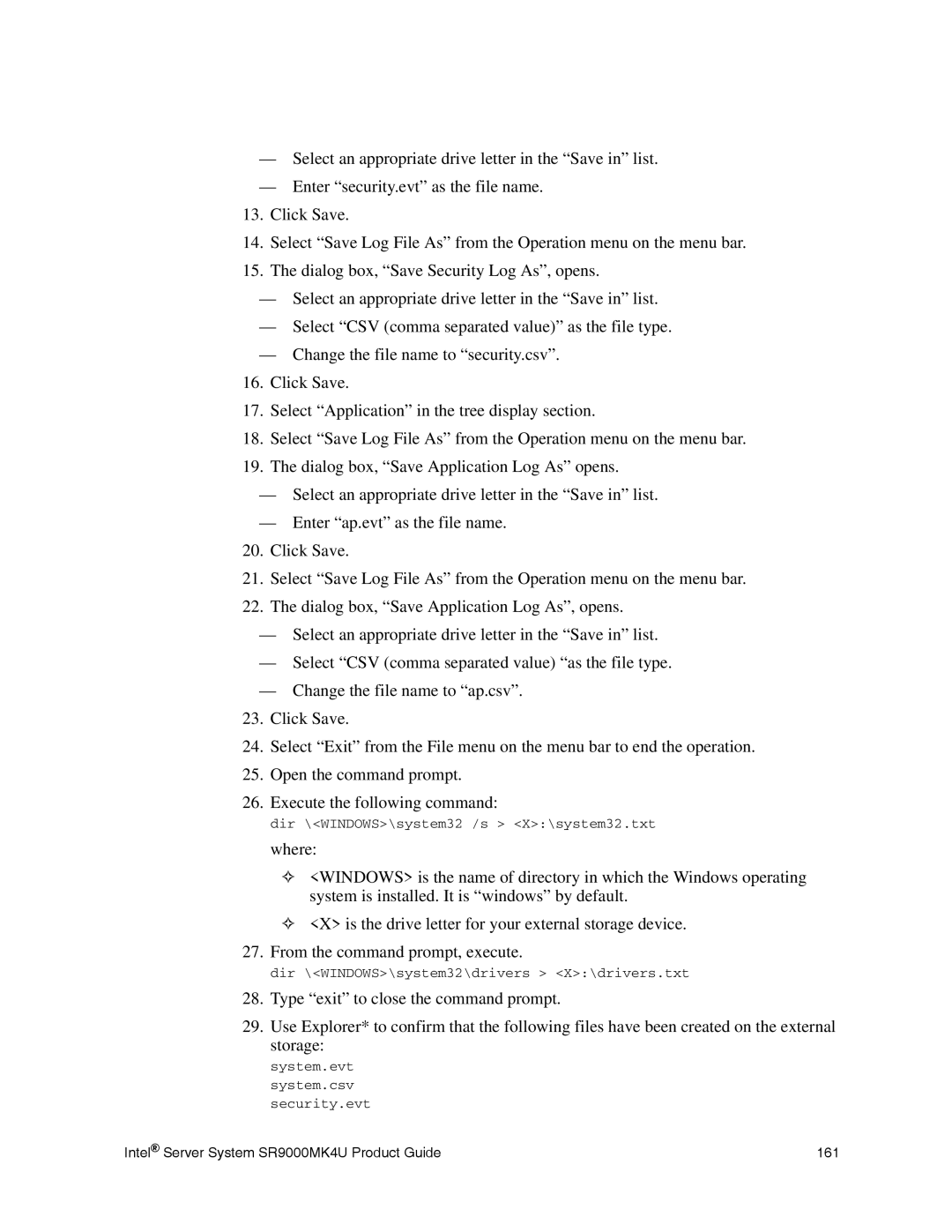—Select an appropriate drive letter in the “Save in” list.
—Enter “security.evt” as the file name.
13.Click Save.
14.Select “Save Log File As” from the Operation menu on the menu bar.
15.The dialog box, “Save Security Log As”, opens.
—Select an appropriate drive letter in the “Save in” list.
—Select “CSV (comma separated value)” as the file type.
—Change the file name to “security.csv”.
16.Click Save.
17.Select “Application” in the tree display section.
18.Select “Save Log File As” from the Operation menu on the menu bar.
19.The dialog box, “Save Application Log As” opens.
—Select an appropriate drive letter in the “Save in” list.
—Enter “ap.evt” as the file name.
20.Click Save.
21.Select “Save Log File As” from the Operation menu on the menu bar.
22.The dialog box, “Save Application Log As”, opens.
—Select an appropriate drive letter in the “Save in” list.
—Select “CSV (comma separated value) “as the file type.
—Change the file name to “ap.csv”.
23.Click Save.
24.Select “Exit” from the File menu on the menu bar to end the operation.
25.Open the command prompt.
26.Execute the following command:
dir \<WINDOWS>\system32 /s > <X>:\system32.txt
where:
✧<WINDOWS> is the name of directory in which the Windows operating system is installed. It is “windows” by default.
✧<X> is the drive letter for your external storage device.
27.From the command prompt, execute.
dir \<WINDOWS>\system32\drivers > <X>:\drivers.txt
28.Type “exit” to close the command prompt.
29.Use Explorer* to confirm that the following files have been created on the external storage:
system.evt
system.csv
security.evt
Intel® Server System SR9000MK4U Product Guide | 161 |
